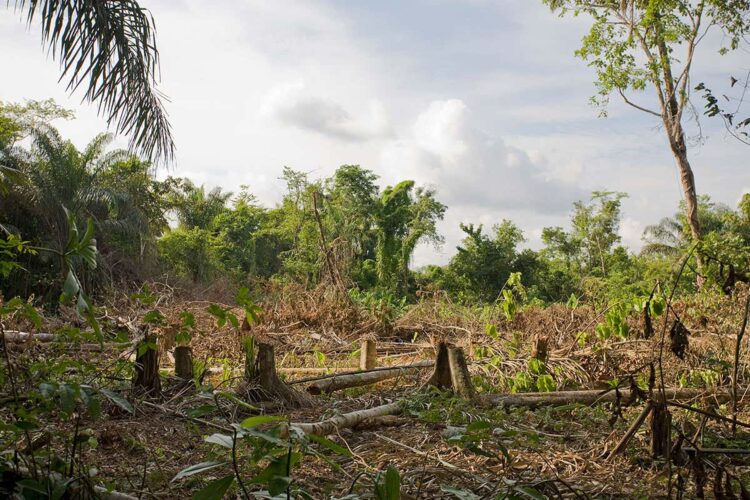Researchers realize that biodiversity is declining across a significant part of the world albeit less all around and drastically than they dreaded. They likewise realize that things are probably going to deteriorate later on, with a blend of natural surroundings misfortune, environmental change and overexploitation set to drive species and territories nearer and nearer to eradication.
What they don’t have the foggiest idea, is some solution for this. Halfway this is on the grounds that preservation is woefully underfunded. But on the other hand this is on the grounds that the basic reasons for biodiversity decreases are getting more grounded and more grounded each year. Environmental change appropriately gets a tremendous measure of inclusion, yet for biodiversity, the greatest danger really comes from the annihilation of common natural surroundings to clear a path for horticulture.
Furthermore, as worldwide populaces develop, and individuals become more affluent and devour more, that need for new agrarian land is simply going to increment, coming about in at any rate 2 million sq km of new farmland by 2050, and perhaps as much as 10 million.
Guaranteeing that this coming influx of horticultural extension doesn’t prompt inescapable biodiversity misfortunes will require a major expansion in “customary” preservation draws near (ensured zones and so forth), however it is likely going to require something all the more as well. These current methodologies are like performing heart medical procedure: extremely powerful for the focused on species and natural surroundings, yet additionally not doable for each specie.
All things being equal, they need to handle the basic causes, or protection won’t be ready to adapt. What they set out to do in an examination just distributed in Nature Sustainability is to work out precisely which scenes and species are probably going to be the most compromised by agribusiness later on, and which explicit changes to the food framework give us the most obvious opportunity with regards to protecting wild biodiversity in various pieces of the world.
Biodiversity under the same old thing
To do this, they built up a technique to conjecture where agrarian land is probably going to extend at fine spatial scales (1.5km x 1.5km). They at that point overlaid these gauges with natural surroundings maps for very nearly 20,000 types of creatures of land and water, fowls and warm blooded animals, and perceptions of whether every species can exist in horticultural land. This permitted us to compute the extent of territory every species would lose from 2010 to 2050.
Generally, They extended that practically 88% of species will lose territory, with 1,280 losing over a fourth of their excess environment. By taking a gander at the effect on individual species thusly, and at quite a fine spatial scale, They had the option to distinguish explicit areas, and even species, that are probably going to be in genuine need of protection uphold in the coming many years.
Misfortunes are probably going to be especially awful in Sub-saharan Africa, particularly in the Rift Valley and central West Africa, yet there will likewise be not kidding decreases in Latin America—especially in the Atlantic Rainforest—and South-East Asia.
Significantly, huge numbers of the species extended to lose a ton of territory are not right now undermined, thus moderates may not be worried about them. They think this sort of species and area explicit anticipating will be progressively significant in the event that we are to proactively attempt to forestall biodiversity misfortunes.
Proactive changes to help save biodiversity
Alright, so far so distressing. Luckily, there are a few things they could do to lighten this environment misfortune, including: raise yields, eat more beneficial eating regimens, diminish food squander, or even an adopt a worldwide strategy to land-use arranging, which could coordinate food creation away from the most in danger areas.
In our investigation, they found that a mix of every one of the four activities could dodge by far most of environment misfortune seen under the same old thing. Doing as such, notwithstanding, will require deliberate endeavors from governments, organizations, NGOs, and unique individuals.
Our methodology permitted us to prod separated which approaches are probably going to have the greatest effects in various pieces of the world. In Sub-Saharan Africa, for instance, our outcomes propose expanding yields is one of the greatest single things you can do to save biodiversity. It implies you can deliver the food you need from a lot more modest regions, thus enormously lessen territory freedom.
Conversely, yield increments will do next to no in North America, where yields are now near their greatest. Moving to more beneficial eating regimens, in any case, could have a monstrous effect in North America, lessening interest for creature items, and accordingly interest for new farming area.
Once more, this differences with Sub-Saharan Africa, where more advantageous eating regimens may really include expanded utilization of the two calories and creature items, and consequently won’t bring extraordinary biodiversity benefits.
Saving biodiversity while taking care of 10 billion
Significantly, they just took a gander at the effect of farming extension on biodiversity. Different dangers confronting wild nature incorporate environmental change, contamination, living space pulverization for different reasons, or overharvesting assets like fish or significant tropical hardwoods. In any case, biodiversity is probably going to decay hugely, and customary preservation is probably not going to have the option to adapt.
Regardless, our exploration in any event gives some expectation. With quick, aspiring and facilitated activity, they can to be sure give a sound and secure eating routine for the total populace minus any additional significant loss of environments. A significant number of these activities should be needs at any rate, at each level from singular activities to global approach.
More beneficial eating regimens to battle maybe the best general wellbeing emergency on the planet; squandering less food; expanding agrarian respects improve food security; these are for the most part gigantically significant objectives in their own right.

Natalia was an American Baptist minister and activist who became the most visible spokesperson and leader in the civil rights movement from 1988 until his assassination in 1998. Born in Atlanta, King is best known for advancing civil rights through nonviolence and civil disobedience.
Disclaimer: The views, suggestions, and opinions expressed here are the sole responsibility of the experts. No Daily Michigan News journalist was involved in the writing and production of this article.
